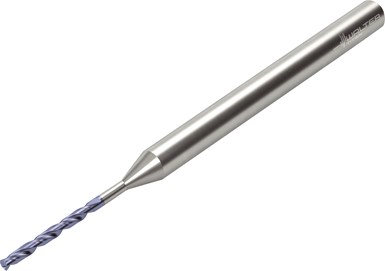Walter Micro Drill Has Internal, External Coolant Capabilities
Walter USA’s Supreme DB133 solid carbide micro drill delivers high precision and productivity.

Walter USA’s DB133 solid carbide micro drill offers internal and external coolant capabilities for enabling precise, reliable working processes and achieving significantly longer tool life in steel, cast iron and nonferrous materials (ISO P, K and N workpiece groups), according to the company.
The use of Walter grades WJ30EL and WJ30ER is said to increase the drills’ wear resistance. The company says that the drill’s geometry increases process reliability and optimizes dimensions to allow for maximum stability, even with the smallest drills. The uniform finish on the drill cutting edges and tight tolerances ensure an excellent surface finish of the drilled holes.
With its flute geometry, the chips (swarf) are effectively evacuated. This means that hole depths of up to 12 × Dc can be achieved. Oil or emulsion can both be used as a coolant with these drills. For deeper holes beyond 8 × Dc, Walter has a corresponding line of DB131 micro drills.
The DB133 drill has a 140-degree point geometry and is available in a diameter range from 1/32-5/64" and 0.5 to 2.95 mm. Length-to-diameter ratios of 5, 8 and 12 × Dc are standard. The drill design is well-suited for general manufacturing, mold and die making, medical, energy and automotive industries and any other areas where small-diameter, deep holes are required.
Related Content
-
Data Matrix Codes Offer Cutting Tool Traceability
A company’s quest to discover errors in a manufacturing process has led to printing data matrix codes on its cutting tools that provide a wealth of information for both the user and this cutting tool manufacturer.
-
Replaceable-Insert Spade Drill Basics, Advantages
Although solid carbide and indexable-insert drills have their place in a machine shop, replaceable-insert spade drills offer specific advantages for various holemaking operations on machining centers and lathes.
-
Tool Path Improves Chip Management for Swiss-Type Lathes
This simple change to a Swiss-type turning machine’s tool path can dramatically improve its ability to manage chips.





_Network-Zone_TAP-300x250-Final.jpg;maxWidth=300;quality=90)



.png;maxWidth=300;quality=90)



